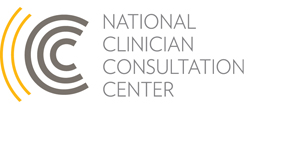Case of the Month: HIV-Positive Partner PrEP
Case Summary
A 19-year-old male recently presented to the caller’s clinic requesting to start pre-exposure prophylaxis (PrEP). The patient reported having unprotected insertive and receptive anal intercourse with his HIV-positive partner for the past two months. His partner is on antiretroviral therapy, with the most recent HIV viral load at reportedly 500 copies/mL “a few months ago.” Their last unprotected intercourse was the day prior to the clinic visit. The patient was in good health, taking no medications, and his rapid HIV Ab test today was negative. A 4th generation antigen-antibody test was also drawn and sent to the lab during the appointment.
The caller’s questions were: (1) Is this patient a candidate for PrEP? (2) If so, what are the considerations?
CCC Consultant Response
Yes, PrEP is an excellent option for this patient after further evaluation of his overall pattern of at-risk activities, his assessment of his own risk, his plans for the future, his understanding of other safer sex interventions, and his likelihood of adherence to PrEP.
But beware! This case has some complicating factors. PrEP needs to be delayed until the patient has first completed post-exposure prophylaxis (PEP). That is because he had an unprotected sexual exposure just yesterday, so he is a candidate for a full 28-day course of non-occupational PEP (nPEP). The consultant recommended the patient receive the preferred nPEP regimen of co-formulated tenofovir DF 300mg / emtricitabine 200mg (Truvada®) one tab once daily with dolutegravir (Tivicay®) 50mg once daily as long as he has no pre- -existing renal disease or contraindication to these mediations. Also, per the CDC’s recently updated Guidelines for Antiretroviral Postexposure Prophylaxis After Sexual, Injection Drug Use, or Other Nonoccupational Exposure to HIV – United States, 2016, the patient should have LFTs and a renal panel drawn at baseline and in follow-up (4-6 weeks after exposure) to assess for PEP toxicity. Additionally, follow-up HIV testing is advised at 4-6 weeks and 3 months after exposure.
After the 28-day course of nPEP, the patient can be transitioned to daily PrEP with tenofovir DF/emtricitabine (Truvada®) as long as he hasn’t acquired HIV from previous exposures and he remains at risk for HIV. To assess that, a slightly different follow-up testing schedule should be considered if the patient transitions directly from PEP to PrEP (rather than if the patient were to defer PrEP until the post-PEP follow up period is completed): after he completes 4 weeks of nPEP, a repeat HIV test (preferably a 4th generation test, although some providers may elect to perform an HIV viral load) will need to be done. If HIV-negative, transition to PrEP can occur at that point. There is only a very small chance that HIV infection will not be detected using this testing strategy and, given the patient’s strong pattern of risk-taking, earlier transition to PrEP is probably a better strategy than waiting for a few months to make sure he is truly uninfected. The caller should refer to CDC PrEP guidelines for other baseline and follow-up PrEP-related testing. This patient will need careful monitoring in the future for HIV, STIs and viral hepatitis transmission. Refills of PrEP medications in this particular case should be for only a month or two initially as per PrEP Guidelines, and ongoing reinforcement about adherence and other safer sexual strategies are important components of routine PrEP care.
Because CCC consultations are based on information provided by the caller or clinician accessing the online consultation center, without the benefit of a direct evaluation or examination of the patient, consultations are intended to be used as a guide. They do not constitute medical advice and are not to serve as a substitute for medical judgment. This Case of the Month includes consultation based on the most up-to-date evidence at the time of its publication. To learn about current recommendations, please call one of our clinical consultation lines.
 University of California, San Francisco |
University of California, San Francisco |
